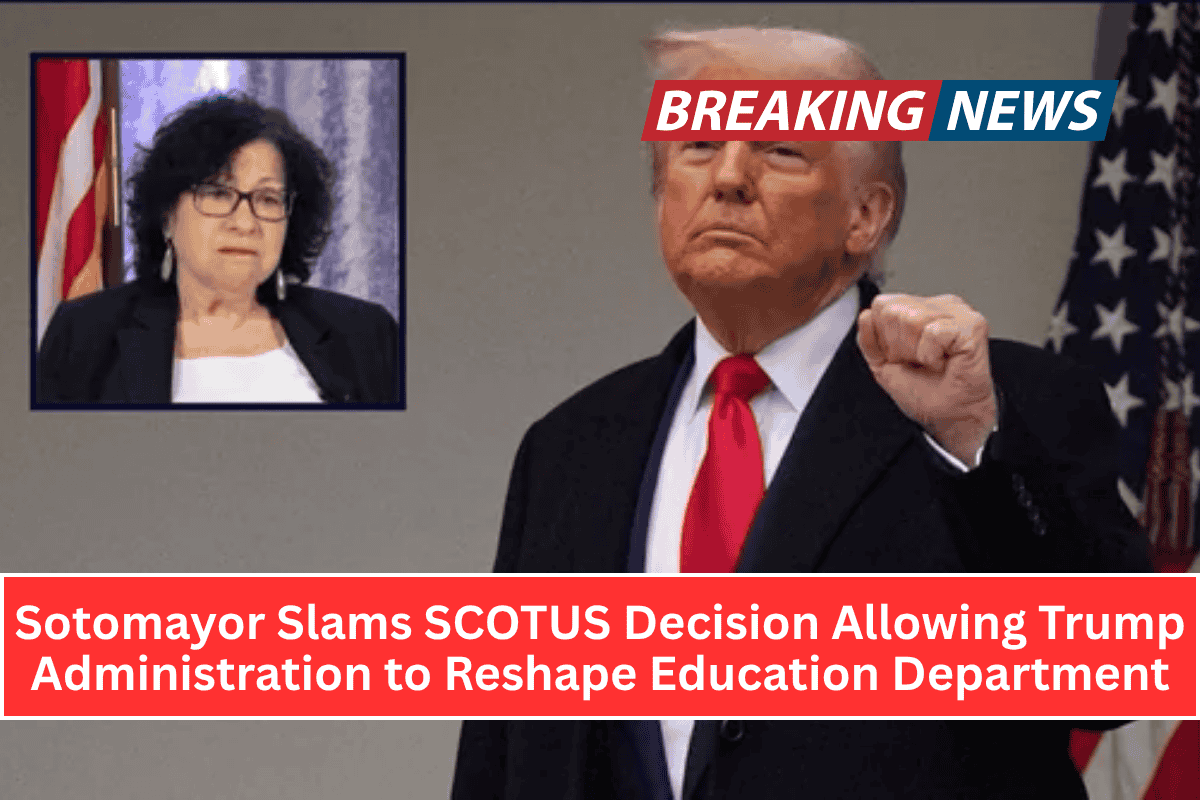Justice Sonia Sotomayor delivered a fiery dissent on Monday after the U.S. Supreme Court ruled in favor of the Trump administration’s plan to overhaul the Department of Education (DOE).
The Court voted 6-3 to lift a federal judge’s order blocking the drastic changes, which included mass firings and transfers of critical programs like student loan portfolios and services for students with disabilities.
In her scathing dissent, Sotomayor accused the majority of abusing their “equitable authority” and allowing the Trump administration to undermine the integrity of the Department of Education.
Joined by Justices Elena Kagan and Ketanji Brown Jackson, Sotomayor condemned the decision as an “indefensible” move that risks “untold harm” to students, particularly in terms of denying educational opportunities and increasing the likelihood of discrimination and civil rights violations.
The Case at Hand: The Trump Administration’s Plans
The Supreme Court’s ruling came after the Trump administration filed an emergency request to bypass a district court ruling that temporarily halted the dismantling of key functions within the DOE.
The administration’s plan involved firing half of the department’s staff and transferring the Federal Student Aid (FSA) and Individuals with Disabilities Education Act (IDEA) programs to other agencies.
Critics, including several states and labor unions, argued that these moves were illegal and would disrupt vital services, leaving schools and students vulnerable.
In March 2024, a district court judge blocked these changes, ordering the reinstatement of terminated employees and preventing the transfer of programs.
The Trump administration appealed this decision, citing that the district court lacked jurisdiction to block their internal management decisions. Monday’s Supreme Court ruling lifted this injunction, effectively allowing the changes to move forward while the case continues.
Sotomayor’s Powerful Dissent
Justice Sotomayor strongly criticized the majority’s decision, saying the ruling handed the executive branch “the power to repeal statutes by firing all those necessary to carry them out.” She decried the action as a direct challenge to the Constitution’s separation of powers, arguing that it was the judiciary’s responsibility to prevent lawlessness, not expedite it.
Sotomayor took issue with the Trump administration’s claim that the plaintiffs, including states, school districts, and unions, had not shown enough evidence of “actual or imminent” harm. She pointed out that the record clearly showed the harm already caused by the dismantling of DOE services.
Schools, she noted, rely heavily on federal support, and cutting these services directly impacts their operations, causing real financial and operational damage.
“The claim is belied by both the record and common sense,” Sotomayor wrote, adding that the dismantling of services had already jeopardized funding streams, forcing schools to divert resources to compensate for the lack of support.
Political and Legal Implications
Sotomayor’s dissent highlighted the deep political and legal ramifications of the Court’s ruling. She argued that the decision not only undermines the DOE but also creates dangerous precedent for future administrations to bypass laws and execute policies with limited checks from the judiciary.
The ruling comes amid ongoing tensions over the balance of power between the executive and judicial branches, with critics accusing the Court of granting excessive power to the Trump administration and enabling actions that could leave vulnerable populations without necessary protections.
While the Trump administration is now free to implement its plans to restructure the Department of Education, the decision has sparked fierce opposition from those who believe it jeopardizes essential services for millions of students.
With the Court’s ruling, the future of the DOE and its ability to serve its intended purpose remains uncertain, as Sotomayor’s dissent continues to resonate with those who fear the loss of federal protections and support for education across the nation.






